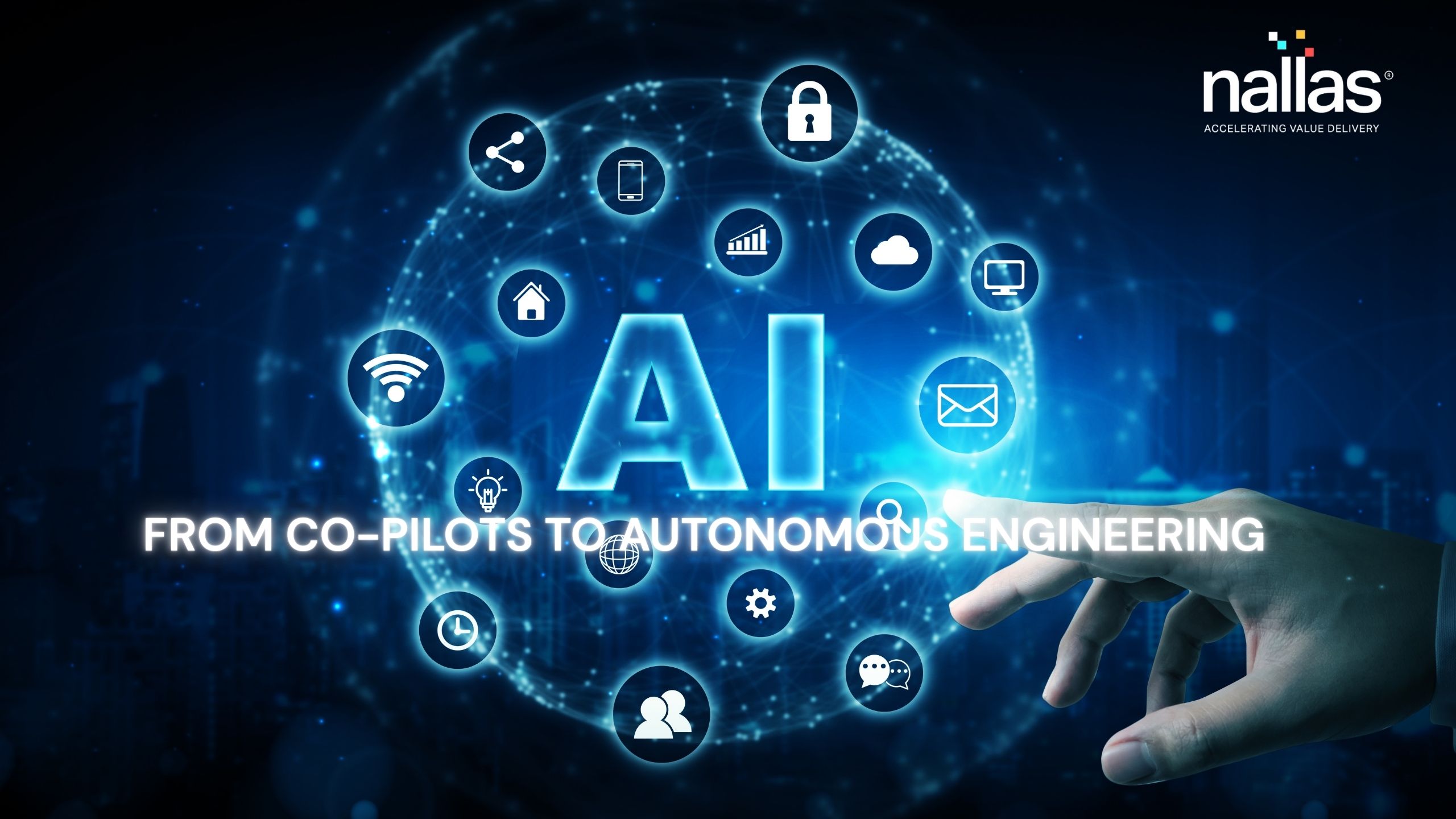
The GenAI revolution is evolving. Where once the conversation circled around AI “co-pilots”—helpful assistants embedded in coding, testing, or documentation—we’re now entering a new phase: the age of Agentic AI. At Nallas, we believe this shift will fundamentally redefine how software is engineered, delivered, and governed.
This blog outlines why Agentic AI matters, how it’s different from current tools, and how enterprises can prepare to integrate it into real-world delivery.
Over the last 24 months, GenAI co-pilots have gained traction:
But these tools are reactive. They assist, but they don’t act.
At Nallas, our experience deploying AI across 50+ SDLC environments made one thing clear: co-pilots improve productivity, but they don’t orchestrate outcomes.
Agentic AI refers to autonomous AI systems capable of executing multi-step goals with minimal human input. These agents:
Unlike co-pilots that wait for prompts, agents initiate actions, handle branching workflows, and update their own plans. They’re not just assistants—they’re teammates (Stanford HAI).
SDLC Phase | Traditional AI Tools | Agentic AI Use Case |
Requirements | Auto-generate stories from prompts | Continuously refine backlog by watching stakeholder tickets |
Design | Suggest wireframes or diagrams | Auto-create architecture proposals and get them reviewed |
Development | Code suggestion via Copilot | Multi-repo code generation and testing across stacks |
Testing | Generate test cases from stories | Create, run, and optimize entire test suites |
Release Management | Notify teams about CI/CD pipelines | Trigger deployments, rollback on error, notify stakeholders |
Documentation | Summarize files | Maintain evolving documentation across the lifecycle |
Agentic AI brings agency—the ability to decide and act—into every corner of the SDLC.
One widely referenced example comes from Microsoft’s use of AI to modernize legacy systems. Microsoft applied large language models like GPT-3 to refactor legacy code, enabling:
Result:
Agentic AI is not a productivity tool. It’s an engineering operating model.
We’ve built foundational capabilities across:
Every agent is grounded in client-specific context using Retrieval-Augmented Generation (RAG), usage logs, codebase embeddings, and live JIRA states
Stage 1: Co-Pilot Adoption
Stage 2: Task Agents
Stage 3: Autonomous Agents
The Future: Agentic Platforms
By 2026, leading engineering teams will run on agentic platforms—systems where:
We’re building toward that future—today.

VP of Strategy